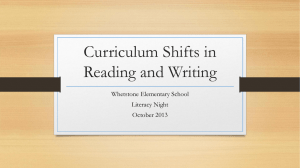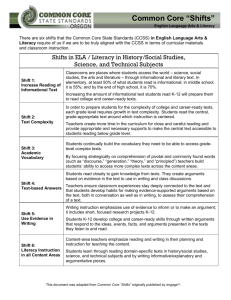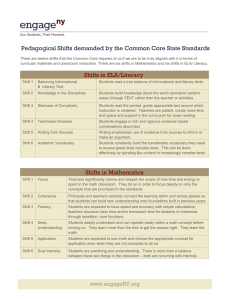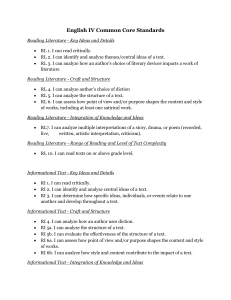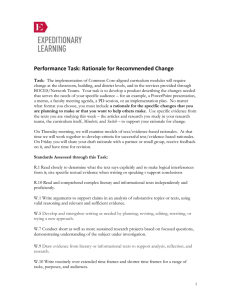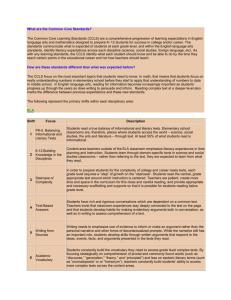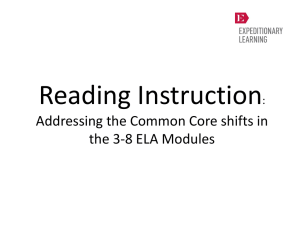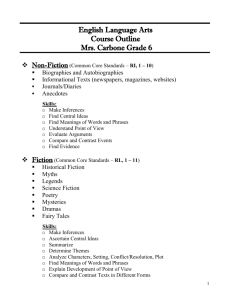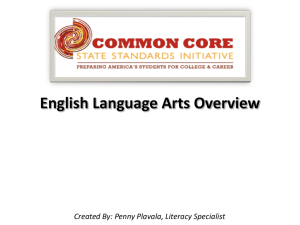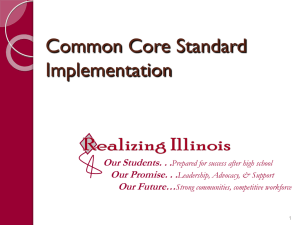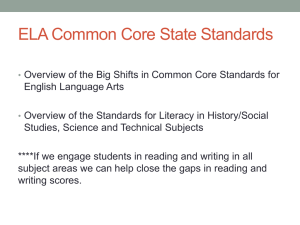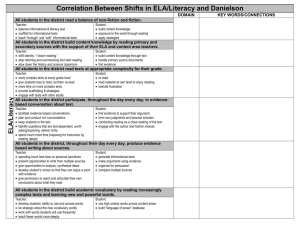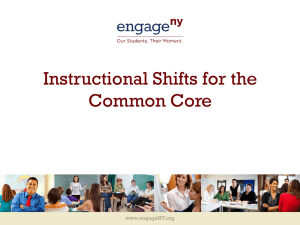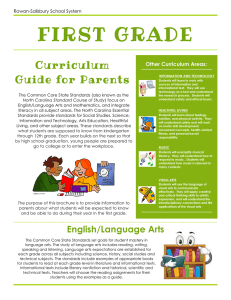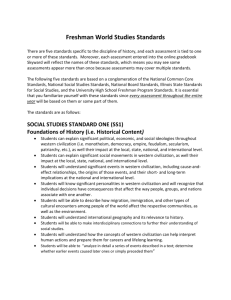xtra-Handout-Instructional Shifts (6-to
advertisement
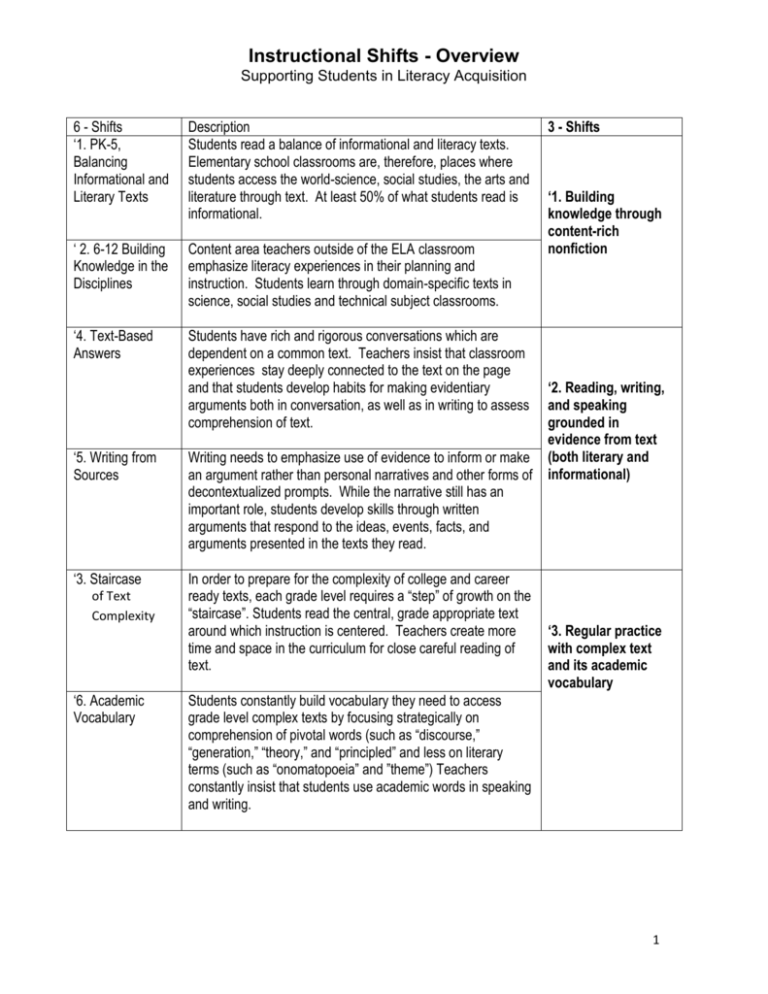
Instructional Shifts - Overview Supporting Students in Literacy Acquisition 6 - Shifts ‘1. PK-5, Balancing Informational and Literary Texts Description Students read a balance of informational and literacy texts. Elementary school classrooms are, therefore, places where students access the world-science, social studies, the arts and literature through text. At least 50% of what students read is informational. ‘ 2. 6-12 Building Knowledge in the Disciplines Content area teachers outside of the ELA classroom emphasize literacy experiences in their planning and instruction. Students learn through domain-specific texts in science, social studies and technical subject classrooms. ‘4. Text-Based Answers Students have rich and rigorous conversations which are dependent on a common text. Teachers insist that classroom experiences stay deeply connected to the text on the page and that students develop habits for making evidentiary arguments both in conversation, as well as in writing to assess comprehension of text. ‘5. Writing from Sources Writing needs to emphasize use of evidence to inform or make an argument rather than personal narratives and other forms of decontextualized prompts. While the narrative still has an important role, students develop skills through written arguments that respond to the ideas, events, facts, and arguments presented in the texts they read. ‘3. Staircase In order to prepare for the complexity of college and career ready texts, each grade level requires a “step” of growth on the “staircase”. Students read the central, grade appropriate text around which instruction is centered. Teachers create more time and space in the curriculum for close careful reading of text. of Text Complexity ‘6. Academic Vocabulary 3 - Shifts ‘1. Building knowledge through content-rich nonfiction ‘2. Reading, writing, and speaking grounded in evidence from text (both literary and informational) ‘3. Regular practice with complex text and its academic vocabulary Students constantly build vocabulary they need to access grade level complex texts by focusing strategically on comprehension of pivotal words (such as “discourse,” “generation,” “theory,” and “principled” and less on literary terms (such as “onomatopoeia” and ”theme”) Teachers constantly insist that students use academic words in speaking and writing. 1


